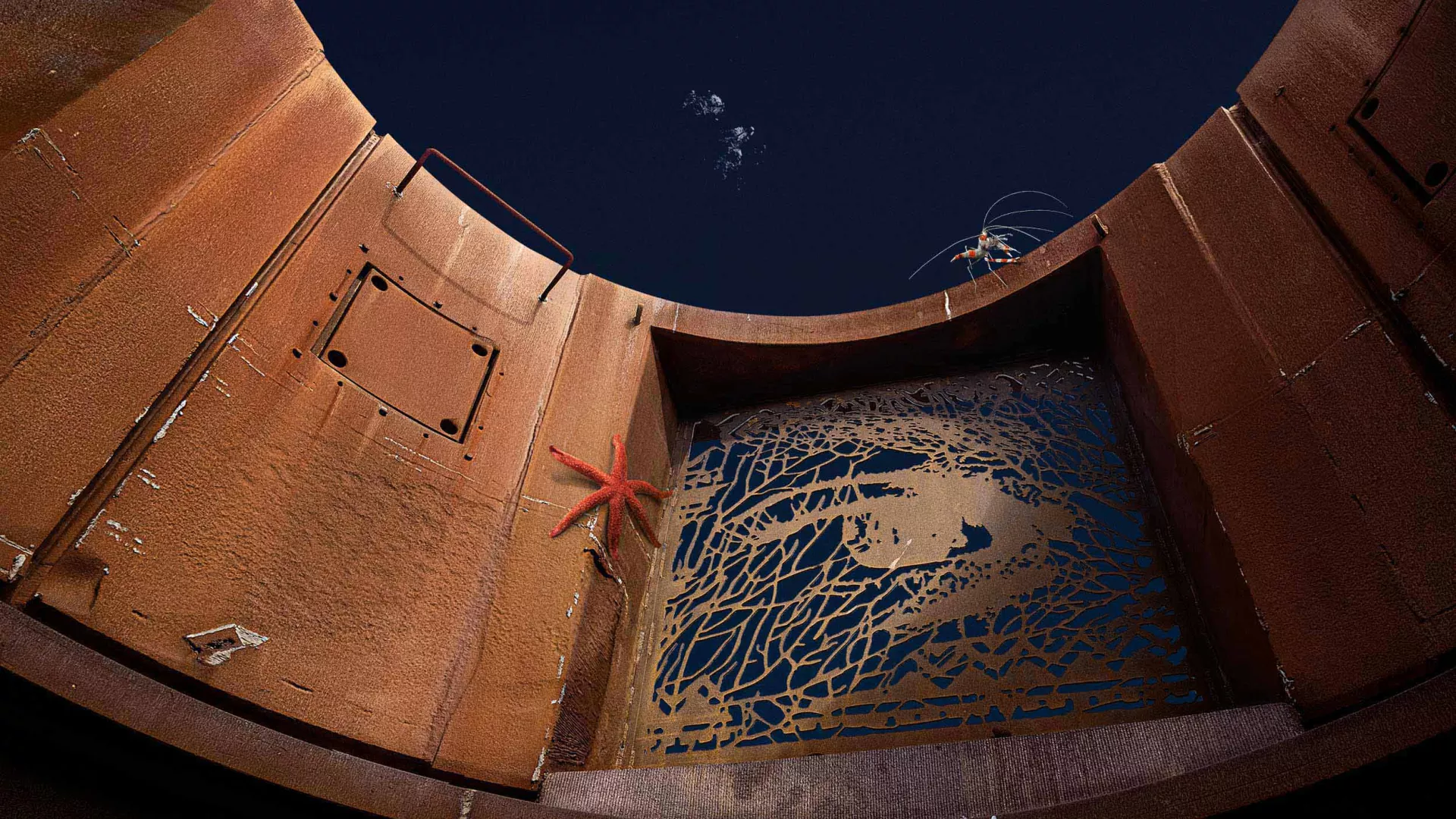
EDP Art Reef
If we choose Earth, we have to include the sea.
To care is to create. The Art Reef project combines the creative power of Vhils with the creative power of nature. Art has been recruited to raise awareness of defending the ocean. The 13 pieces in this installation were created from materials that, in the past, created electricity to heat and light our homes.
The materials have been removed from the coal-fired power stations of EDP, which now has the goal of transitioning to energy produced by renewable technologies instead of by fossil fuels. The artist transformed these materials into works of art and, in turn, nature will transform the works of art over time into an ecosystem for marine life.
This installation is a dialogue between art and nature, following the principle of creating a new, re-purposing materials being a recurring feature of the works of Vhils, as he reinterprets them and gives them an artistic meaning and new role. This dialogue aligns with the commitment by EDP to choose the path to decarbonisation. To choose art as inspiration and a way to influence society. To choose Earth.
Guided tour
Take a closer look at the link between art and the ocean and find out how to visit this underwater exhibition, accompanied by a specialized company.
Three power stations, two countries.
Corals, the basis of the Reef
Protected from the currents, the EDP Art Reef pieces are in a privileged position to enable life to grow on the new reef. In addition to space for all kinds of marine animals to pass through and settle there, live coral will be planted on the works by Vhils to accelerate the growth of the ecosystem. A healthy reef is proof that nature is in balance.
The corals, raised in the Algarve region by the local Plant a Coral project, demonstrate the importance of having the right partners to strengthen sustainability. The EDP Art Reef was created thanks to Vhils and materials from the former EDP power stations, also relying on the commitment of the Albufeira City Council, Turismo de Portugal, Albufeira Marina, Algarve Centre of Marine Sciences of the University of Algarve (CCMAR-UAlg), Directorate-General for Natural Resources, Safety and Maritime Services (DGRM), Portuguese Environment Agency (APA), Navalrocha, Easydivers and Xavi-Sub and production partners, including Mota Engil, Lindo Serviços and AMOP.
Vhils
Alexandre Farto aka Vhils is a Portuguese artist. He has developed a unique visual language based on removing the surface layers of walls and other supports using unconventional tools and techniques. Peeling back the layers of our material culture like a contemporary urban archaeologist, Vhils reflects on the impact of urbanity, development and global standardization on people's landscapes and identity. Destroying to create, he formulates powerful and poetic visual propositions from materials that the city rejects, humanizing depressed areas with his moving large-scale portraits.
Since 2005, he has presented his work around the world in exhibitions, events and other contexts - from working with communities in the favelas of Rio de Janeiro to collaborations with a variety of renowned institutions. Represented by several renowned international galleries, his work is also represented in various public and private collections in several countries.
EDP's path towards a green future
Our commitment to the planet encompasses all ecosystems and all renewable energy sources. And water - the oceans, seas, rivers, lakes and lagoons - is essential in the path EDP is travelling towards carbon neutrality in 2030 and to the end of coal use by 2025. Regarding the sea, we have been members of the UN Global Compact since 2004, among the signatories of the Sustainable Ocean Principles. We are similarly committed to nine of the 17 Sustainable Development Goals defined by the UN. All this because we choose Earth.







